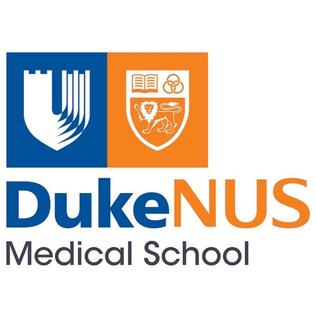
Singapore EXPO is the largest convention and exhibition venue in Singapore with over 100,000 square metres of column-free, indoor space spread over 10 halls. The center was designed by Cox Richardson Rayner, built by PSA International, and funded by the Ministry of Trade and Industry.

Singapore General Hospital (SGH) is an academic health science centre and tertiary referral hospital in Singapore. It is located next to the Bukit Merah and Chinatown districts of the Central Region, close to the Outram Community Hospital (OCH), which functions as a supplementary community and rehabilitation hospital to SGH for newly discharged patients. There is also the Outram Polyclinic to complement outpatient care. All of these institutions are operated by SingHealth, which comes under the purview of the Ministry of Health (MOH).

Singapore Health Services, commonly known as SingHealth, is the largest group of healthcare institutions in Singapore. Established in 2000, the group consists of four public hospitals, three community hospitals, five national specialty centres and a network of eight polyclinics. The Singapore General Hospital (SGH) is the largest hospital in the group and serves as the flagship hospital for the cluster.

The National Centre for Infectious Diseases, previously known as the Communicable Disease Centre, is a national public health institute under the Ministry of Health of Singapore. Located next to Tan Tock Seng Hospital in Novena, all patients within the city-state who are affected with a highly contagious disease are also quarantined at the NCID and is used to control an outbreak of such diseases. The executive director of the hospital is Professor Yee-Sin Leo.

Healthcare in Singapore is under the purview of the Ministry of Health of the Government of Singapore. It mainly consists of a government-run publicly funded universal healthcare system as well as a significant private healthcare sector. Financing of healthcare costs is done through a mixture of direct government subsidies, compulsory comprehensive savings, national healthcare insurance, and cost-sharing.

The Duke–NUS Medical School (Duke–NUS) is a graduate medical school in Singapore. The school was set up in April 2005 as the Duke–NUS Graduate Medical School, Singapore's second medical school, after the Yong Loo Lin School of Medicine, and before the Lee Kong Chian School of Medicine. It is a collaboration between Duke University in the United States and the National University of Singapore in Singapore. Duke-NUS follows the American model of post-baccalaureate medical education, in which students begin their medical studies after earning a bachelor's degree. Students are awarded degrees from both Duke University and the National University of Singapore.
St. Andrew's Community Hospital (SACH) is a non-profit hospital based in Singapore. It was established in 1992 and runs as a service of St. Andrew's Mission Hospital. It provides intermediate medical care to the patients, primarily focusing on rehabilitation and sub-acute care.

The COVID-19 pandemic in Singapore was a part of the worldwide pandemic of coronavirus disease 2019 caused by severe acute respiratory syndrome coronavirus 2. The first case in Singapore was confirmed on 23 January 2020. Early cases were primarily imported until local transmission began to develop in February and March. In late March and April, COVID-19 clusters were detected at multiple migrant worker dormitories, which soon contributed to an overwhelming proportion of new cases in the country.
The following is a timeline of the COVID-19 pandemic in Singapore in 2020.

This article documents the chronology and epidemiology of SARS-CoV-2 in October 2020, the virus which causes the coronavirus disease 2019 (COVID-19) and is responsible for the COVID-19 pandemic. The first human cases of COVID-19 were identified in Wuhan, China, in December 2019.

This article documents the chronology and epidemiology of SARS-CoV-2, the virus that causes the coronavirus disease 2019 (COVID-19) and is responsible for the COVID-19 pandemic, in March 2021. The first human cases of COVID-19 were identified in Wuhan, China, in December 2019.

This article documents the chronology and epidemiology of SARS-CoV-2 in August 2020, the virus which causes the coronavirus disease 2019 (COVID-19) and is responsible for the COVID-19 pandemic. The first human cases of COVID-19 were identified in Wuhan, China, in December 2019.

This article documents the chronology and epidemiology of SARS-CoV-2 in September 2020, the virus which causes the coronavirus disease 2019 (COVID-19) and is responsible for the COVID-19 pandemic. The first human cases of COVID-19 were identified in Wuhan, China, in December 2019.

This article documents the chronology and epidemiology of SARS-CoV-2, the virus that causes the coronavirus disease 2019 (COVID-19) and is responsible for the COVID-19 pandemic, in February 2021. The first human cases of COVID-19 were identified in Wuhan, China, in December 2019.

This article documents the chronology and epidemiology of SARS-CoV-2, the virus that causes the coronavirus disease 2019 (COVID-19) and is responsible for the COVID-19 pandemic, in June 2021. The first human cases of COVID-19 were identified in Wuhan, China, in December 2019.

This article documents the chronology and epidemiology of SARS-CoV-2, the virus that causes the coronavirus disease 2019 (COVID-19) and is responsible for the COVID-19 pandemic, in April 2021. The first human cases of COVID-19 were identified in Wuhan, China, in December 2019.

This article documents the chronology and epidemiology of SARS-CoV-2, the virus that causes the coronavirus disease 2019 (COVID-19) and is responsible for the COVID-19 pandemic, in May 2021. The first human cases of COVID-19 were identified in Wuhan, China, in December 2019.

This article documents the chronology and epidemiology of SARS-CoV-2, the virus that causes the coronavirus disease 2019 (COVID-19) and is responsible for the COVID-19 pandemic, in October 2021. The first human cases of COVID-19 were identified in Wuhan, China, in December 2019. The cases of the COVID-19 pandemic was lowering later.
Synapxe Pte Ltd, formerly known as Integrated Health Information System (IHiS), is a wholly-owned subsidiary of MOH Holdings Pte Ltd, the holding company through which the Singapore Ministry of Health owns corporatised institutions in the public healthcare sector.








